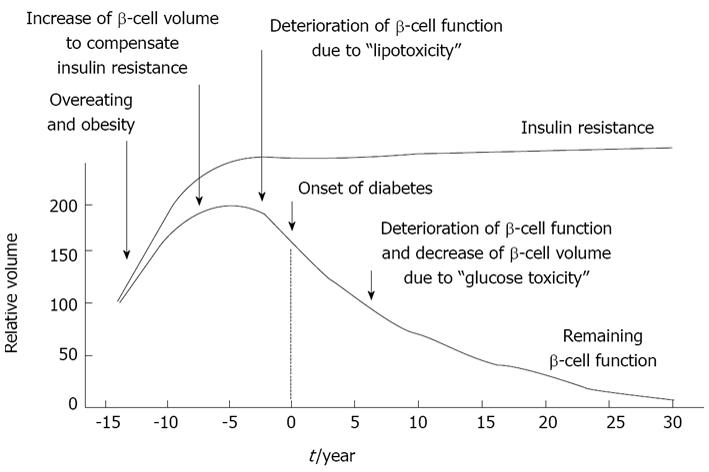Copyright
©2013 Baishideng Publishing Group Co.
World J Diabetes. Dec 15, 2013; 4(6): 263-269
Published online Dec 15, 2013. doi: 10.4239/wjd.v4.i6.263
Published online Dec 15, 2013. doi: 10.4239/wjd.v4.i6.263
Figure 1 Typical progress of type 2 diabetes.
The development of type 2 diabetes is associated with pancreatic β-cell dysfunction and insulin resistance. First, overeating and/or obesity lead to the development of insulin resistance and normal β-cells secrete a larger amount of insulin to compensate for the increased insulin resistance. Next, large adipocytes secrete a larger amount of free fatty acids and/or various inflammatory cytokines which gradually deteriorate β-cell function and finally lead to the onset of diabetes. This process is known as “β-cell lipotoxicity”. Once hyperglycemia becomes apparent, β-cell function progressively deteriorates; insulin biosynthesis and secretion are reduced. This process is known as “β-cell glucose toxicity” which is often observed in type 2 diabetes.
- Citation: Kaneto H, Matsuoka TA. Down-regulation of pancreatic transcription factors and incretin receptors in type 2 diabetes. World J Diabetes 2013; 4(6): 263-269
- URL: https://www.wjgnet.com/1948-9358/full/v4/i6/263.htm
- DOI: https://dx.doi.org/10.4239/wjd.v4.i6.263









